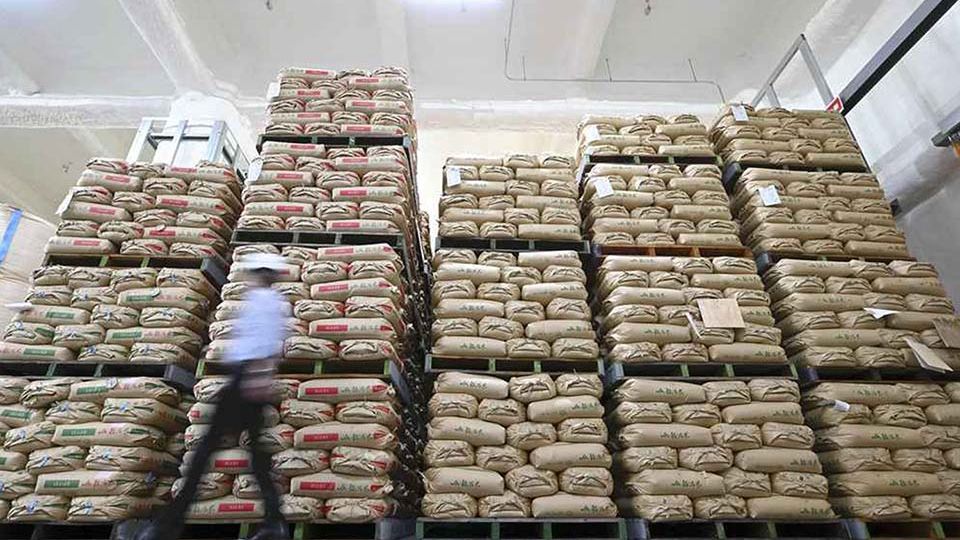May 28, 2025
TOKYO – The government has taken the unusual step of releasing stockpiled rice under “discretionary contracts.” It is hoped that this will have the effect of turning the tide on soaring rice prices.
Under the conventional practice of general competitive bidding, eligible participants were limited to major distributors, such as the National Federation of Agricultural Cooperative Associations (Zen-Noh). In contrast, the discretionary contracts will allow around 50 major retailers that can handle 10,000 tons or more of rice to participate.
According to an announcement by the Agriculture, Forestry and Fisheries Ministry, it will release a total of 300,000 tons of stockpiled rice — 200,000 tons produced in 2022 and 100,000 tons produced in 2021. The sales price at stores, including general expenses and profit margins, is envisioned to be around ¥2,000 per 5 kilograms. The rice is expected to be on store shelves in early June.
Rice has been stockpiled at government expense, and the ideal approach is to sell the rice at the highest possible price when it is released. Under general competitive bidding, the operator who offers the highest price wins the bid.
For this reason, in-store prices for 5 kilograms of rice have remained high at more than ¥4,000, double the level last year, even though 310,000 tons of stockpiled rice have been released so far. The release of stockpiled rice under discretionary contracts is reportedly meant to trigger a change in the uneasy market sentiment.
However, the government’s attempt to tie down over-the-counter selling prices poses a challenge in terms of the antitrust law. Retailers are urged to exercise restraint and avoid adding excessive profit margins to their selling prices.
Prime Minister Shigeru Ishiba said at the Diet that prices “must be in the ¥3,000 range.” In addition to stockpiled rice, the prices of brand-name rice will also be a focus.
The ministry has noted that stagnation at the distribution stage is the reason for the high prices.
If stockpiled rice that is priced cheaply due to the discretionary contracts is placed on store shelves, wholesalers and other businesses — who are said to be hoarding their inventory in anticipation of continued tight supply and demand — may increase their sales, and the effect of lower prices may spread to brand-name rice as well.
Even if stockpiled rice is used for the time being as a step to calm prices, it will be necessary to change the nation’s rice agricultural policy from the consumers’ perspective as a step in the medium to long term. In the current policy of effectively reducing rice paddy acreage, an inability to provide a stable supply of rice under unforeseen circumstances has been made clear.
It is obvious that current rice prices are at a level that is difficult for consumers to accept, but producers are also faced with rising prices of fertilizers and production materials. The number of rice farmers has halved over the past 15 years. There are concerns that if prices become too low, farmers will leave the business at an accelerated pace.
It is hoped that a system will be established that allows farmers to increase rice production with peace of mind, including strengthening the production base by reviewing the policy of reducing rice paddy acreage, and transferring surpluses to exports. It is important to promote measures to stabilize prices that will be acceptable to both consumers and producers.

